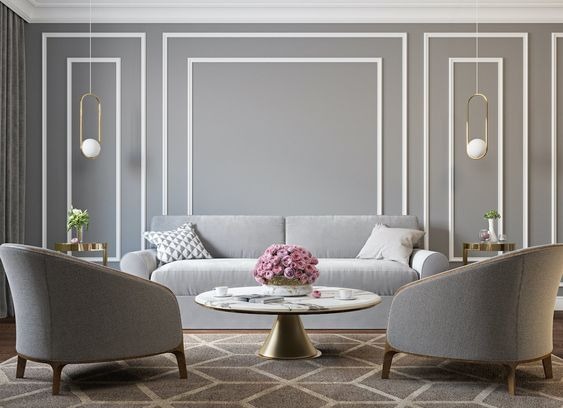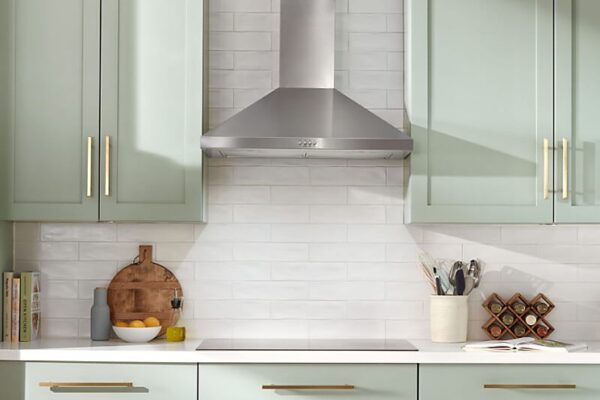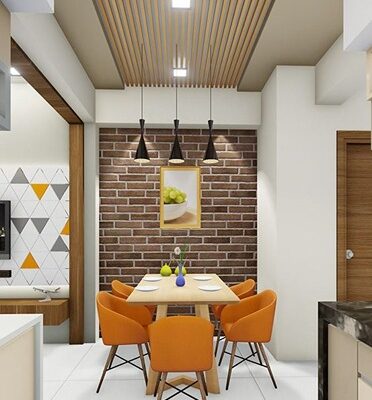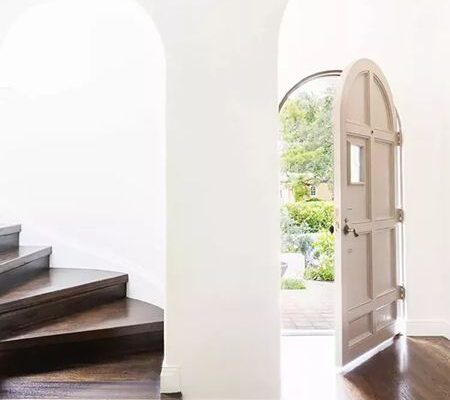The Beauty of Matching Trim and Wall Colors
Matching trim and wall colors bring a sense of harmony and balance to the overall design, allowing the architectural details to shine while maintaining a unified aesthetic. The deliberate choice of matching trim and wall colors adds a touch of sophistication, transforming a space into a visually stunning environment that reflects careful attention to detail. This technique not only adds an elegant touch but also serves to accentuate the architectural features of the space. By employing this approach, you can effectively draw attention to the vibrant hues present in the room, allowing them to take center stage. Additionally, this method grants your exquisite furniture the opportunity to shine and make a lasting impression. The elegant appeal of a room is heightened by the seamless integration of matching trim and wall colors, creating a visually cohesive space. To accomplish a harmonious and unified painted trim look that aligns seamlessly with your home’s style, make use of various designer guidelines and helpful tips.
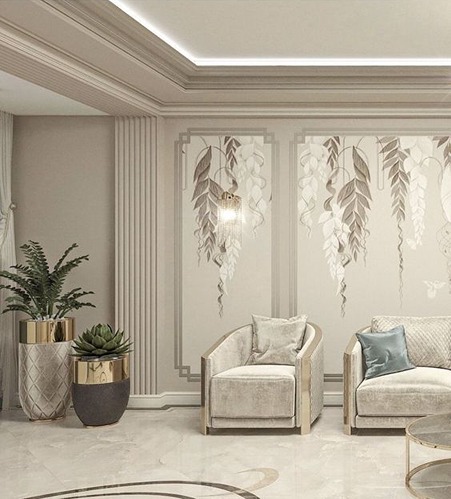
Incorporate Professional Design Principles
If you opt to paint your trim in the same color as your walls, it’s crucial to apply professional design principles to ensure a deliberate and tailored appearance that complements your home’s style. Here are some guidelines to follow:
Meticulously select the appropriate color: When choosing the color for your trim, take into account the overall aesthetic you wish to achieve. Consider factors such as the room’s ambiance, existing color palette, and architectural features. The right color choice will enhance the cohesion and harmony between the walls and the trim.
Utilize high-quality trim and strategic placement: To achieve a polished and refined look, invest in high-quality trim materials. Opt for durable and well-crafted trim that complements the style of your home. Additionally, pay attention to the placement of the trim, ensuring it aligns with the room’s architectural features and enhances its visual appeal.
Select the appropriate paint finish: The choice of paint finish can greatly impact the final outcome. Opt for a finish that suits the overall aesthetic of the room. For instance, a satin or semi-gloss finish can add a touch of sophistication and make cleaning easier, while a matte finish can create a more subdued and contemporary look.
Pay attention to wall decor: When the trim and walls share the same color, it’s essential to carefully consider the wall decor. Select artwork, mirrors, and other decorative elements that complement the color scheme and add visual interest to the room. Thoughtful wall decor choices will enhance the overall ambiance and create a cohesive design.
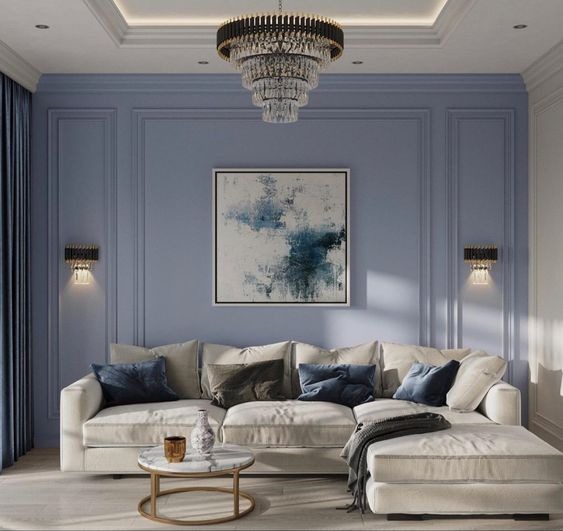
Selecting the Right Color
Undoubtedly, the choice of paint color plays a pivotal role in the success of matching trim and walls. It is imperative to carefully consider the characteristics of the chosen color. Generally, muted, pastel, dark, and neutral shades tend to harmonize well when the trim and walls are painted in the same color. However, it’s crucial to assess the specific qualities of the room before embracing rich jewel tones like emerald or red. These hues can exude an overwhelming presence in certain environments while creating a stunning impact in others. To ensure a cohesive design, take into account the overall ambiance and existing elements within the space. It is advisable to avoid excessively vibrant colors such as bright yellows or intense shades of coral, as they may not be suitable for this particular paint application.
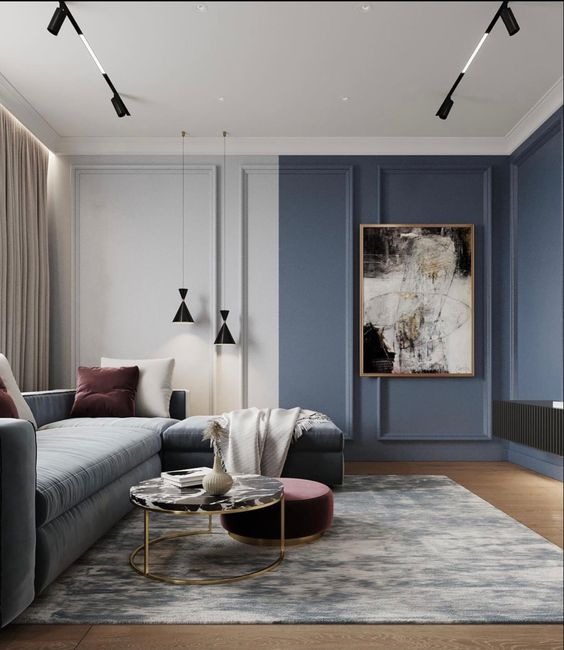
Employ Quality Trim and Strategic Placement
Should you choose to paint the trim in your room to match the walls, it is essential to prioritize the use of high-quality trim materials and deliberate placement. Consider incorporating trim types such as board and batten, wainscoting, or panel molding, as they can significantly enhance the architectural focal points of the room. By carefully selecting and professionally installing these painted trim elements, you can ensure a visually appealing and aesthetically pleasing result. The trim becomes an integral part of the room’s design, so it is crucial to approach its selection and placement with utmost care and attention to detail.
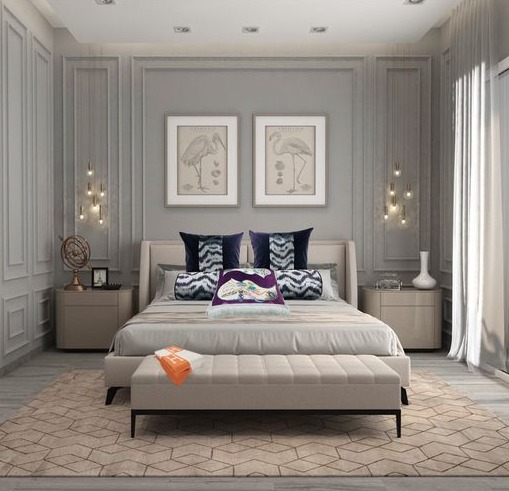
Choose the Best Paint Finish
The paint finish you opt for when matching the trim and wall color plays a significant role in the overall design outcome. Consider the following recommendations based on different design preferences:
Modern and Formal Look: For rooms where you desire a high-end and formal atmosphere, consider using a satin or gloss finish on both the trim and walls. This choice adds a sleek and polished touch to the space, enhancing its modern appeal.
Traditional and Durable Look: If you prefer a more traditional aesthetic that also prioritizes durability, select an eggshell finish for the walls and a semi-gloss finish for the trim. The eggshell finish provides a subtle sheen to the walls while the semi-gloss finish on the trim adds a touch of elegance and facilitates easier cleaning.
Complementary to Mid-Century Modern and Scandinavian Styles: For styles like mid-century modern and Scandinavian, a matte finish on the walls combined with a satin finish on the trim can create a desirable flat appearance. The matte finish adds a contemporary touch, while the satin finish on the trim provides a subtle contrast and highlights the architectural features.
Additionally, keep in mind that the flatter the paint finish, the more it conceals imperfections and flaws on the surfaces. On the other hand, higher gloss finishes tend to accentuate flaws and reflect more light.
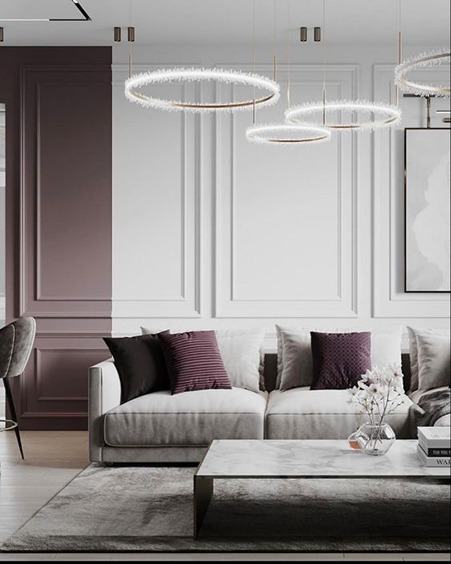
Pay Attention to Wall Decor
When showcasing architectural trim styles like panel molding or chair rail, it is essential to be discerning with additional wall decor choices. Avoid cluttered applications such as wall-mounted shelves or crowded gallery walls, as they can detract from the trim’s visual impact. Instead, consider incorporating lighting features such as sconces to highlight the trim. Opt for mirrors with simple frames that complement the overall design, and select artwork that exudes a high-quality aesthetic. These thoughtful choices in wall decor will contribute to a cohesive and visually pleasing ambiance in the room.
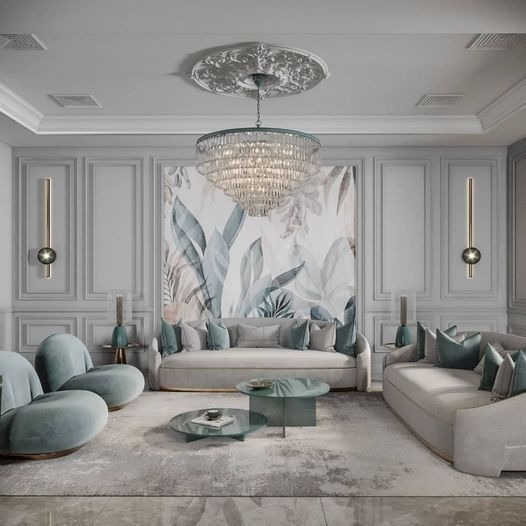
Advantages of Matching Trim and Walls
There are several compelling benefits to painting your trim the same color as your walls, as it allows you to:
- Emphasize Texture, Color, and Architectural Elements: When the trim and walls share the same color, the focus shifts towards highlighting the room’s texture, color scheme, and architectural features. This approach creates a captivating backdrop for your room’s decor, instantly elevating the overall ambiance. The unified color scheme adds a visual dimension that surpasses the effect achieved by contrasting wall and trim colors. Rather than framing your walls, painting the trim in the same color elongates the walls and imparts a deliberate and intentional design element that complements your personal style.
- Explore Dark, Muted, and Rich Colors: Matching trim and walls liberates you from being limited to colors that solely suit white or wood trim. Instead, it offers you the opportunity to embrace and showcase dark, muted, and rich colors. By having trim that matches the walls, you create a canvas that allows these beautiful hues to shine. This harmonious color palette provides a tasteful backdrop for exquisite wall art and elegant window treatments. With the trim blending seamlessly into the space rather than standing out, you have greater flexibility in choosing decor elements and furniture that add visual interest.
- Shift Focus from Trim Flaws: Painting your walls and trim the same color also helps divert attention from any unavoidable flaws that may exist in your trim or doors. As trim and doors endure daily wear and tear, they can accumulate dents, knicks, or scratches over time. However, when the trim is painted in the same color as the walls, the eye is naturally drawn to the actual wall color instead of fixating on the contrasting trim framing the walls. This technique allows you to downplay any imperfections and maintain a cohesive visual flow throughout the space.
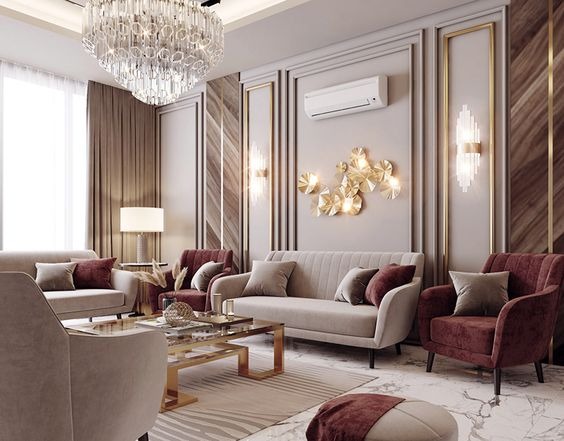
Versatile Applications of Matching Trim and Walls
Understanding the advantages of matching trim and walls opens up possibilities for various design styles. While historical homes and those with architectural details naturally lend themselves to this approach, there are numerous other design styles and home types where matching wall and trim paint can be seamlessly incorporated. Consider the following:
- Homes with Traditional Styles: Traditional homes often exude timeless elegance and can greatly benefit from the cohesive look achieved by matching trim and walls. This approach enhances the classic appeal and showcases the intricate architectural elements found in these homes.
- Homes with Grand Architectural Elements: Homes featuring grand architectural elements, such as crown molding, intricate ceiling details, or ornate pillars, can amplify their visual impact by opting for matching trim and walls. By unifying the color, the focus is directed towards the striking architectural features, resulting in a truly impressive space.
- Homes with Wide or Ornate Trim: If your home boasts wide or ornate trim, painting it the same color as the walls creates a unified and sophisticated aesthetic. This choice allows the trim to seamlessly blend with the walls, while still accentuating the intricate details and craftsmanship.
- Historical Homes: Historical homes often exhibit a natural affinity for matching trim and walls, as this style was commonly seen in their original designs. By maintaining this tradition, you can honor the home’s historical character while enhancing its overall charm and authenticity.
- Minimalist Style Homes: Matching trim and walls align perfectly with minimalist style homes, where simplicity and clean lines are emphasized. This approach contributes to a sleek and uncluttered appearance, allowing the architectural elements and carefully selected decor to take center stage.
- Modern Farmhouse Style Homes: The popular modern farmhouse style can benefit from matching trim and walls, as it cultivates a sense of harmony and unity within the space. This approach highlights the rustic charm while maintaining a modern aesthetic.
- Scandinavian Style Homes: Scandinavian design, known for its simplicity and natural elements, can be enhanced by matching trim and walls. This choice reinforces the minimalist approach while creating a cohesive and visually pleasing environment.
- Mid-century Modern Style Homes: Matching trim and walls can seamlessly integrate into mid-century modern style homes, accentuating the clean lines and simplicity of this design era. The cohesive color scheme allows iconic furniture pieces and unique architectural features to shine.
